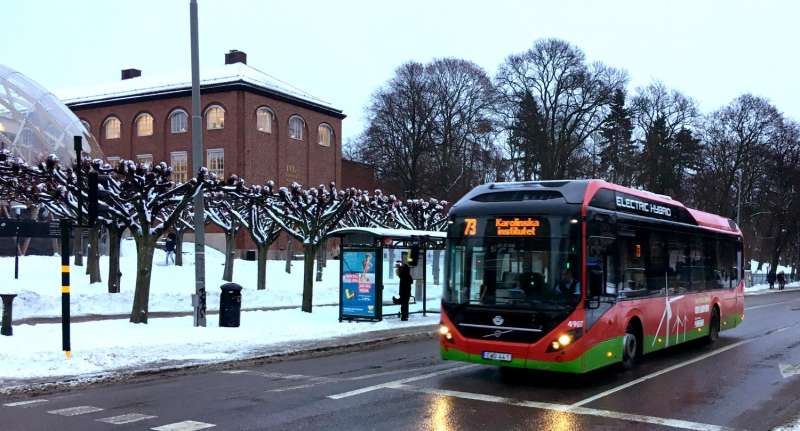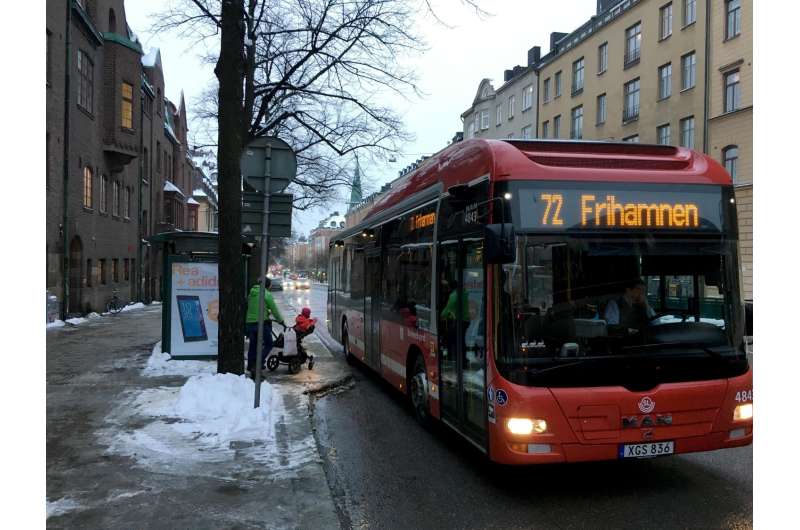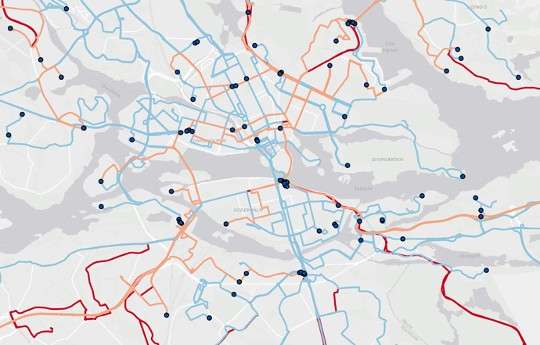New tool helps cities to plan electric bus routes, and calculate the benefits

The recent rollout of Sweden's first wireless charging buses was accompanied by a tool for cities to determine the environmental and financial benefits of introducing their own electrified bus networks.
The bus system analysis model was presented during ceremonies marking the debut of wireless charging buses in Stockholm – the first in all of Scandinavia. Using the model to propose the optimal locations for installing chargers on Stockholm's bus network, energy technology researcher Maria Xylia at KTH Royal Institute of Technology reported that the fleet could halve CO2 emissions while lowering energy consumption by 34 percent if the city installed 150 chargers to electrify 94 bus routes.
The 40 percent savings in fuel costs would balance out the projected costs of investments in infrastructure such as chargers and connection to the grid, says Xylia, who developed the model in cooperation with the International Institute for Applied System Analysis (IIASA). Xylia, a researcher at the Energy and Climate Studies Unit and Integrated Transport Research Lab at KTH, developed the model as part of her stay at the Young Scientists Summer Program of 2016 at IIASA with a grant sponsored by the Swedish Research Council, Formas.
While that forecast is based on optimized energy usage, the model also offers users the option of cost optimization. In Stockholm's case, a cost-optimized scenario would mean fewer electrified bus lines, but lower energy consumption nevertheless – albeit with a slightly less extensive estimate of 40 percent reduction in emissions.

Xylia says that the model allows for multiple bus charging technologies and even takes into account potentially rising electricity costs in the estimates. "But as long as electricity prices remain in this range, the infrastructure cost would balance the fuel savings."
However, in order to gain the maximum environmental benefits of electrification, the electricity needs to come from renewable sources, she says. "If you look at the energy mix throughout the EU, you will see a difference – it's a totally different story from Sweden. You have to have green energy in order to maximize environmental benefit."
The model can be applied to any city as a basis for decision-making, Xylia says.
"As long as you have a detailed map of the bus network and a reliable bus schedule, then you can do this for any city," she says. "London is much bigger than Stockholm, but if they have this data, then we can generate optimized energy and cost scenarios for that system."

A complete dissemination of the model will be published at a later date.
The project is connected with IIASA's work on energy system optimization methodologies that can be used on the local, regional and national scale, says one of Xylia's supervisors on the project, Florian Kraxner, deputy director of IIASA's Ecosystems Services and Management Program.
One such model is IIASA's BeWhere, which is the basis for the bus electrification analysis tool. Kraxner says that adapting the BeWhere model to transport is a step towards making cities energy efficient and reducing their carbon footprint.
"Cities and urban areas will soon become the major driver for energy demand globally," says IIASA researcher Sylvain Leduc, who served as Xylia's co-supervisor. "Many cities are still using a combination of different kinds of buses and tramways. These combined road and rail urban grids can be assessed an optimized in an integrated way."
Provided by KTH Royal Institute of Technology



















